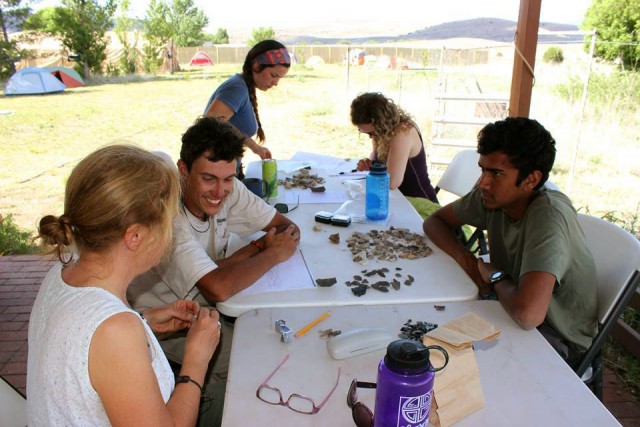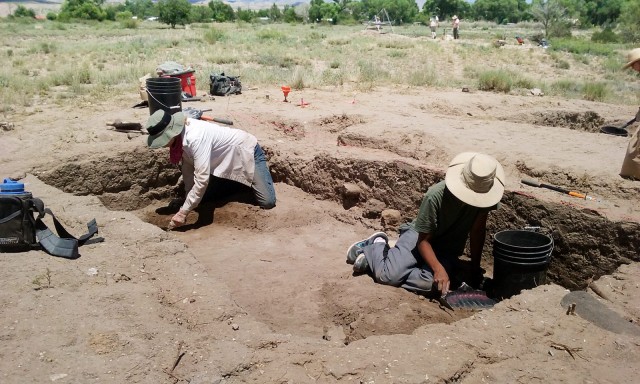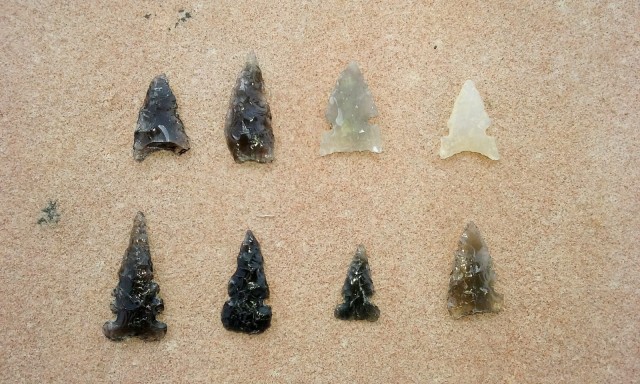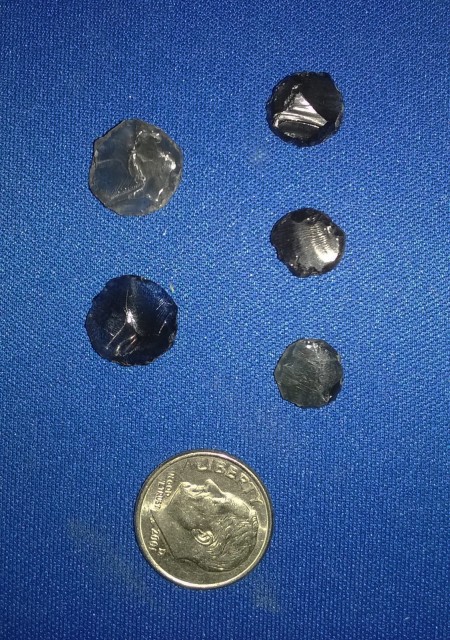- Home
- >
- Preservation Archaeology Blog
- >
- Flakes, Points, and Little Obsidian Discs
Stacy Ryan, Lithics Lab Director, Preservation Archaeology Field School
Now that excavations at the Dinwiddie site are complete, the students are focused on writing detailed summaries about what we’ve learned these past five weeks. Our days here have been incredibly full with fieldwork, ceramics and lithics labs, and evening lectures. These last few days at Mule Creek are still busy, but they flow at a different pace as we examine the artifact data, maps, and field notes to better understand the history of the Dinwiddie site.
This season the students recorded more than 8,000 pieces of flaked stone artifacts during our afternoon lab sessions, which is twice the amount recovered in years past. Most of these artifacts are debitage, or the flakes and debris produced during core reduction and tool production, and our lab time was spent sorting through large bags of artifacts to identify tools and cores.

Because of these efforts, we now have an idea of how the reduction debris and the tool types—such as scrapers, bifaces, and projectile points—are distributed across the site. Some interesting differences have already emerged. For example, a partially excavated adobe room in Roomblock 2 yielded more than half the flaked stone collection, while another feature in Roomblock 1 held a much higher proportion of obsidian and projectile points. Were these rooms abandoned earlier than those investigated in 2014, and subsequently filled with trash? Does the abundance of obsidian and projectile points in one room block indicate that those residents were more invested in formal tool production, or participated in different exchange networks? Although more detailed analysis is needed to fully address these questions, the students are examining these preliminary data so that they can interpret their excavated features and discuss how they relate to the rest of the site.

Excavations this year produced 30 projectile points, many of which are the small triangular unnotched or side-notched designs often seen at Salado sites in this region. Obsidian from the Mule Creek source, located approximately 20 km (about 12 miles) from the site (and also very close to our field camp), was preferred for the small arrow points. Based on artifact types and raw materials we know that many of these points were manufactured by the people living at Dinwiddie, rather than being traded into the site. Through specialized energy dispersive x-ray fluorescence analysis (XRF), conducted last year by Steve Shackley at the Geoarchaeological XRF Lab, we learned that obsidian was often procured from the Mule Mountains source locality, a material that is not prevalent at other sites in the area. With further analysis we will see if this pattern holds up in the new room block we investigated.

Among the more unusual artifacts from Dinwiddie are five small obsidian flakes that were shaped into disks through flaking, and possibly grinding. One was collected during the 2013 field season, and we were surprised to find several more this year. Their function is unclear, but perhaps they are gaming pieces or some kind of ornament. Interestingly, most of these were found in the same adobe room as the small fired clay balls.

As an analyst, I am fortunate to have such a large dataset to work with and to have also been a part of the data recovery process. I am leaving with more questions than answers—not an uncommon occurrence at this stage—but the data compiled by the students this season enable us to decide on our sampling strategy and refine our research questions so that the flaked stone collection will continue to contribute to our understanding of the Dinwiddie site.
Explore the News
-
Join Today
Keep up with the latest discoveries in southwestern archaeology. Join today, and receive Archaeology Southwest Magazine, among other member benefits.